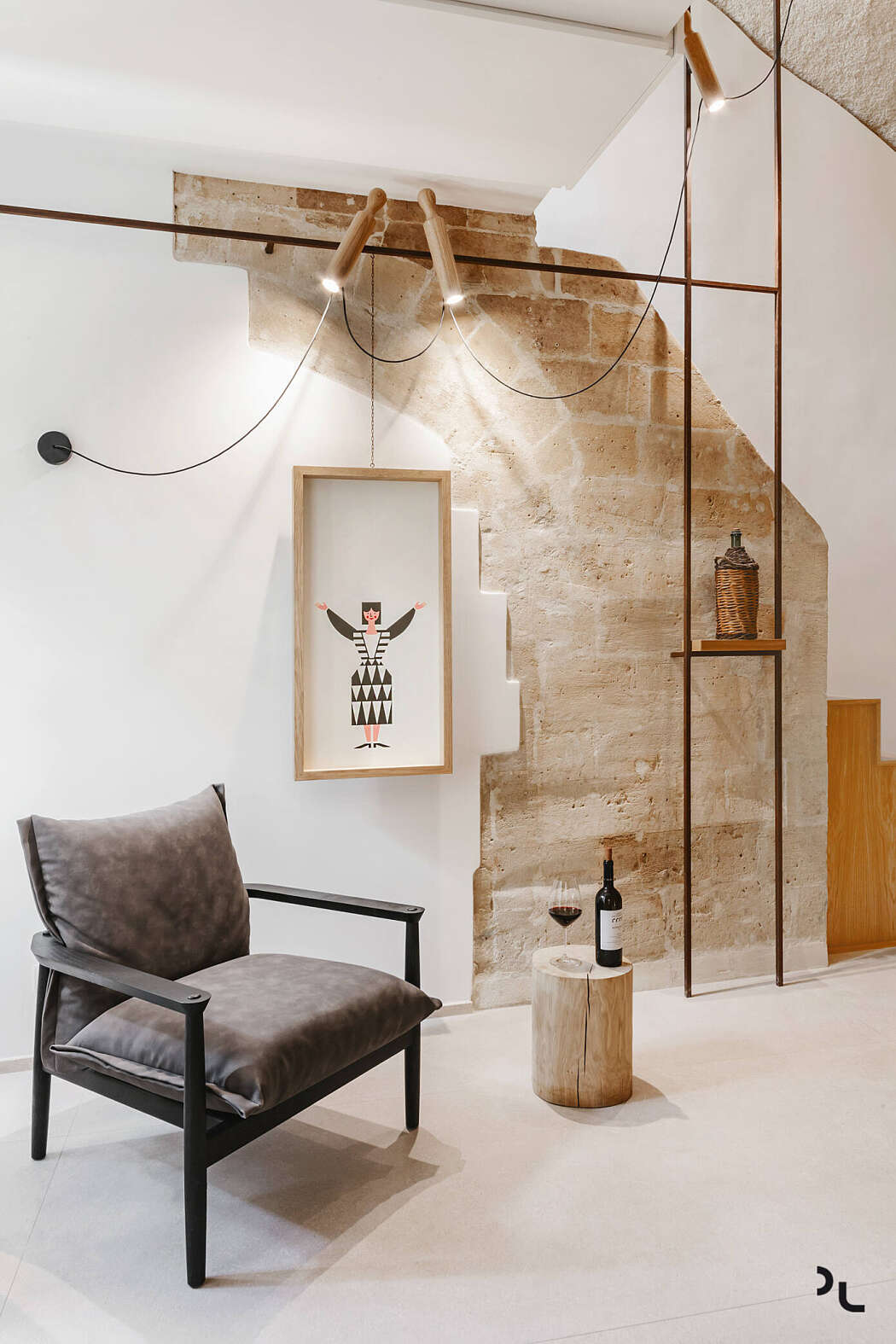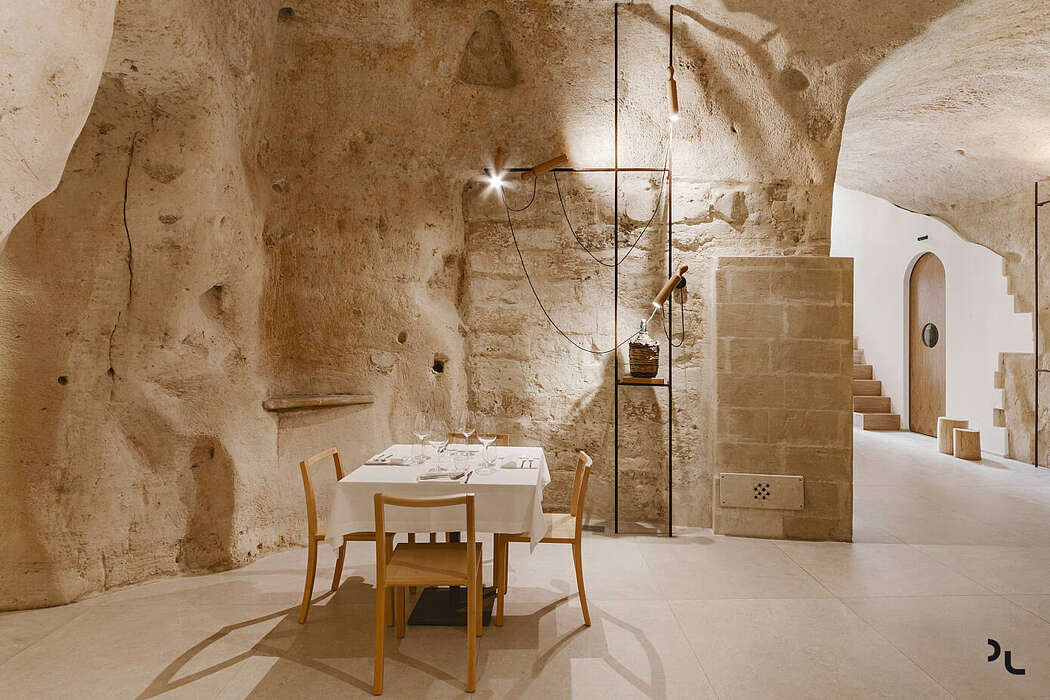The restaurant pizzeria Oi Marì designed in 2018 by Mancastudio is located in the heart of Matera in Italy. It is divided into different environments dug into the limestone, each with a different shape due to conformation of the cave created by man over the centuries.














Description
Originally, new spaces within the cave were created through subtraction, adding to the existing living spaces by removing material from the mother block of calcarenite rock.
We like to think that those who created the so-called Sassi rather than add, subtracted matter to achieve a goal. Also, from this assumption comes the intention of our and our client’s project.
Oi Marì was born in 1999 thanks to its young owners who are Materan and Neapolitan. They were enthusiastic about wanting to introduce to Matera the Neapolitan culinary tradition. Over the years, their enthusiasm has evolved and their skills have led them to generate their own unique style of cooking.
Today, the restaurant overlooks a large open space that seems to envelop the visitor in a warm and harmonious environment that is highlighted by a few design elements that emphasize the natural beauty of the space.
“We wanted Oi Marì to have a different look.” With this sentence Sara, Mary and Luca decided, after so many years, to turn the page and to show themselves in a different light to their customers. The pizza remains on the menu as a staple of their tradition, but the kitchen has evolved into refined and essential dishes.
Their request was to empty the old room of past trappings and to make the environment essential, just like their kitchen; while still honoring the history and traditions of the Neapolitan pizzeria.
This is where our inspiration comes from, design must respect the client’s desire, “remove, not add;” to tread lightly with a few, weighted, essential elements that can be the of a renewal.
The entrance from the small bar/reception area discretely welcomes the visitor, accompanying him through a succession of rooms of various shapes and sizes. The largest room is characterized by the presence of a wine cellar holding over 2,000 bottles. The bottles are nestled inside pre-existing niches while separated from the hall through a glass and metal structure. This is the crown jewel of the entire project. Being able to place within a strongly characterized space, not only an exhibition of wines but a real winery, was a great desire of Luca, who is a connoisseur of wines.
All the rooms are treated in the same way; the beauty of the cave has been enhanced, leaving the limestone completely exposed and introducing a few simple functional furnishings for use. All the furniture, the iron structures and the lights were entirely designed by the architects and crafted by local artisans. The lighting fixtures, inspired by the rolling pin used to roll out pizza dough, are the connecting element between the old and the new, between the tradition of the past and the vision of the future. The rolling pins are not whole but cut in half. It is therefore, a form that remembers tradition, reinterprets it and assigns it a new function, namely that of illuminating the rooms and the tables. A slender corten iron bar is also used and is transformed to serve various functions, from a display frame to a lamp holder, a glass holder for the bar and a structure to display panels. We have tried to reinterpret the philosophy of the owners of the restaurant in an architectural key, which, starting from simple raw materials of the highest quality, reinvent traditional cuisine without erasing its memory. The final product is the marriage between the old and the new, the desire not to make noise in a place that sometimes seems sacred, to respond with care and attention to the customer’s request, giving him the convenience of working with a functional design and a warm and harmonious aesthetic. The design choices have also led to the enlargement of the kitchens and new spaces in the dining room, thus making the viewer discover environments that existed before, but were not rightly valued. These functional changes have become for us the inspiration to make the space even more interesting, giving a unique experience in new spaces to discover; each with their own charm. The materials used are the materials that, in our opinion, respond to the naturalness of these places; simple materials with warm colors that when well inserted and structured have responded to our aesthetic / functional needs.
Photography by Pierangelo Laterza
from HomeAdore http://bit.ly/2W0deha
Comments
Post a Comment